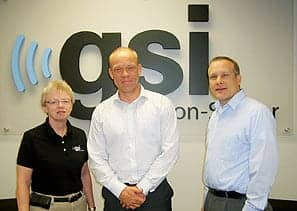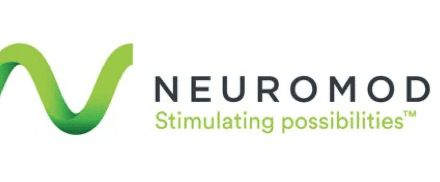When Lars Rasmussen first learned he would be the new general manager and COO of Grason-Stadler Inc (GSI), he quickly assessed the situation and came to the conclusion that the company had been in a kind of “no-man’s land,” with GSI as a relatively small business unit inside one of the world’s largest medical consolidators (VIASYS/Cardinal Health/CareFusion) and Fortune 20 company. The result was that—although GSI retained its excellent products and reputation, as well as several key personnel like Senior Product Manager Jan Painter and Director of US Sales Ron Taylor—it was not fully leveraging the strengths of its products and the reputation of its brand.
Enter William Demant Holding (WDH), the parent company of Oticon and Bernafon, which recognized these strengths, purchasing GSI in October 2009 from CareFusion, and adding it as an independent company to its Diagnostics Division that includes Interacoustics, Maico Diagnostics, Tremetrics, and Amplivox. Rasmussen, who had worked at Interacoustics for over 5 years, spent his first week at GSI in the exhibit hall of the American Academy of Otolaryngology-Head and Neck Surgery (AAO-HNS). Because there was little time and no new signage available, he invested $50 at a local Kinko’s to make a large placard that declared: GSI is back!
“It’s the best $50 investment I ever made,” says Rasmussen. “We actually had people—including a couple of our competitors—come up to us and welcome us back. I think people realize that, historically, GSI has been a very important player in this industry. For many audiologists and dispensers, GSI equipment is what they were initially trained on. And they can see we are now in a corporate structure that understands and appreciates hearing health care. We’ve always offered reliable equipment that, in many instances, established the ‘gold standard’ for the industry; now, we also have the support, R&D, and expertise of WDH to bring GSI back to being an innovator and standard-bearer.”

GSI Senior Product Manager Jan Painter, General Manager Lars Rasmussen, and Director of Marketing David Roback are hearing industry veterans who are excited about the company’s new position within the WDH Diagnostics Division.
A Heritage of “Setting the Clinical Standard”
GSI’s founder was an extremely bright, soft-spoken gentleman named Rufus Grason who in the 1940s worked at the Psychoacoustic Laboratory at Harvard University where scientists were investigating the psychology and physiology of hearing and communications. When these scientists left Harvard, they needed instruments to continue their research. In 1949, Grason and Steven Stadler cofounded Grason-Stadler, and Grason served as the company’s president for 40 years, from 1949 to 1989. GSI originally manufactured electronic medical instruments for behavioral and pharmaceutical research, as well as for NASA’s Project Mercury in the training of Ham and Able, the first space chimps. The company is credited in 1952 with bringing to market one of the first audiometers, and Grason held numerous patents for audiometers and tympanometers. GSI was known as a technology leader. For example, between 1970 and 1978, it developed five new audiometer models and two middle-ear analyzers.
In 1987, the company was acquired by Lucas Industries in the first of several ownership changes that included Welch Allyn and Nicolet Biomedical. Later, these companies became a part of VIASYS, then Cardinal Health, then CareFusion.
New US headquarters. Even as a relatively small company within these parent groups, GSI’s products and brand—particularly the GSI 61 Audiometer and TympStar Middle Ear Analyzer—remained extremely popular with hearing care practices, hospitals, and VA clinics throughout the decades. “For a company in any other industry to have gone through about 10 [different corporate transitions] since the 1970s,” says Jan Painter, PhD, who worked with Rufus Grason, “there has to be something unique that makes customers loyal to the product. And, in my view, it’s largely a ‘mindshare’ issue—how clinicians interact with the instrumentation, especially the user interface—in addition to the products’ performance and reliability.”
“It is to the brand’s credit that GSI has remained the gold standard, offering products that are known for their reliability, longevity, and user-friendliness,” says Rasmussen. He states that its market strengths and sales demographics also complement those of WDH’s Diagnostics Division, the worldwide leader in auditory diagnostic instrumentation. The group experienced growth well above market numbers in 2009. Additionally, the majority of GSI’s sales are generated in North America.
“This is one reason we’ve established GSI’s global headquarters here in Minneapolis,” he says. “Products from GSI will be supported from here. We will, of course, see what other global synergies are available; however, [Minneapolis] will remain the global headquarters. Also, from a transition and heritage standpoint, our product development will have a distinct focus on the North American market. This product approach is also well suited to the Asian markets—including Japan, China, and Korea—as they generally prefer the ‘US way’ of interfacing with equipment and conducting audiology. GSI will certainly continue to thrive in the global market, but our heritage is definitely from a US-based design philosophy, and we intend to keep it that way.”
Since its move from Madison, Wis, in March, GSI now has 36 employees at its headquarters, and several new hires are planned. The company intends to build upon the current distribution network and its business partners, and all export customers will be served through the new Minneapolis facilities. In fact, the company has invested heavily in research with its partners about those product and business enhancements that will position them for even more success in the future.
“It’s exciting to have our worldwide headquarters here in the United States,” says Director of Marketing David Roback, who has worked in hearing health care for nearly 20 years. “Throughout my career in the hearing aid industry, you become accustomed to working from a product development and marketing function that is usually centered in Europe, so it’s definitely unique for us to have these capabilities here in the United States.”
Leveraging New Strengths
But Roback, Rasmussen, and Painter are quick to note that the company fully intends to take advantage of the wealth of resources available at WDH’s Danish facilities, including the Eriksholm Research Center and respected industry researchers like Claus Elberling, PhD, and his colleagues.

GSI’s growing product development team also benefits from a partnership with Danish colleagues.
“Obviously, given the various sizes and strengths of our companies, we’re trying to capitalize on our economies of scale,” says Rasmussen. “Once you have an exceptional technology platform, you want to leverage that as well as possible for the different markets. This increases your efficiency, and it also benefits you because the technology is tested in many different configurations. Our GSI product developers are now able to go to Denmark and see everything that is available on both the technology and software sides. Along with guidance from our business partners and distributors, we believe we now have an excellent plan in place for implementing changes that will get us to the next level, while retaining those things that have always drawn clinicians to GSI
.
“Obviously, membership in the William Demant Group is key,” Rasmussen continues. “As Jan Painter says, this is the last management transition she will see at GSI, and this is the right owner. The intention of WDH is to grow the business, get it back into a leadership position in all respects, and take advantage of the profound industry knowledge our companies possess. When all the divisions are pooled together, we probably have the largest R&D department in hearing diagnostics, and we also have the considerable advantage of the hearing aid side of the business, as well.”
Extending the Heritage
The legacy of GSI is not lost on Rasmussen. “One thing that has characterized Grason-Stadler through the decades is that we’re known for not cutting any corners when releasing products; they’re well tested and offer a good out-of-the-box experience,” he says. “A strong part of our heritage is that we use proven solutions often developed in close dialogue with the clinical community. We also hope to broaden the functionality of our products in that we want to enhance the entire process, from when patients enter the clinic to when they leave the clinic, and support clinicians with intelligent designs and software. GSI has been known as the company that sets the clinical standard.”
In fact, “Setting the Clinical Standard” is GSI’s new tagline. Roback says that this is more than just a motto. “Not only does it present what we’re all about, but it also provides us with an internal measurement tool and yardstick,” he says. “We can ask ourselves, ‘Are we setting the clinical standard with this product, this business practice, or this brochure?’ So it constantly reminds us what we aspire to do.”
“The niche that we see for GSI within the Diagnostics Division is really the clinical high end; that’s where we have established our reputation,” says Rasmussen. “That is what we’ll continue to focus on initially, and we will, of course, explore other opportunities, as the high-end clinical market is admittedly limited in terms of size. Obviously, we’d also like to expand our business [into other areas] beyond audiometers, tympanometers, OAEs, and ABRs, and there are plenty of areas worth pursuing.”
Because of the number of clinicians who were originally trained using GSI equipment, Rasmussen says that the new GSI will offer a homecoming of sorts. In fact, his sign says it all: “GSI is back!”
For more information on GSI, visit the company’s Web site at grason-stadler.us.
Citation for this article:
GSI is back! Hearing Review. 2010;17(6):38-41.





